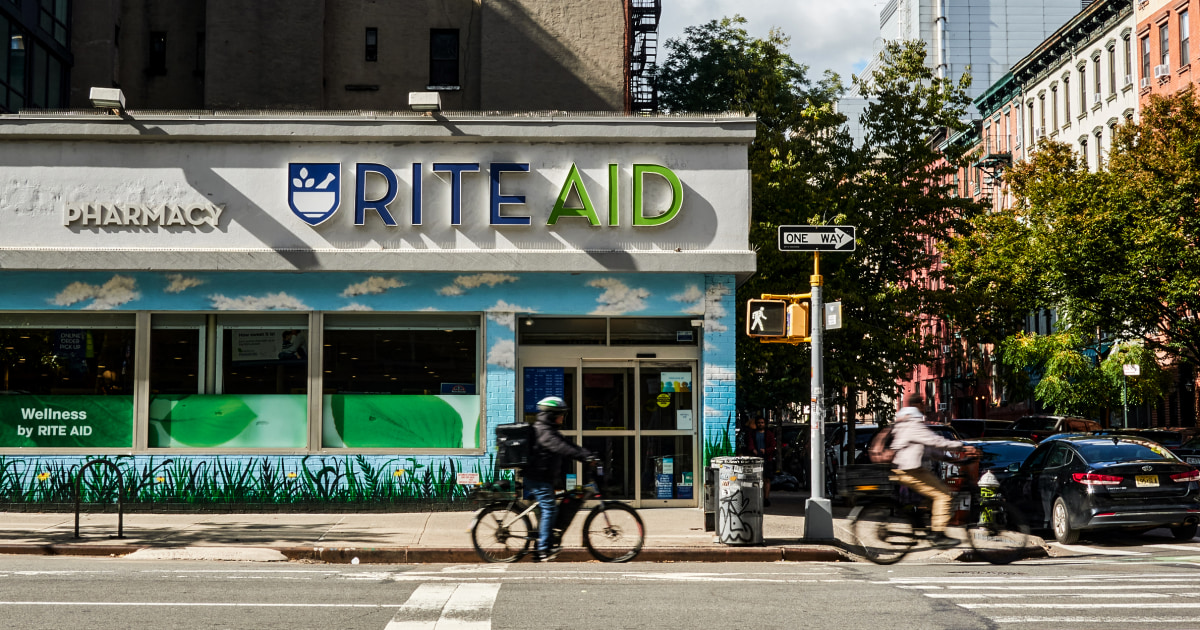Rite Aid, the third-largest U.S. drugstore chain, has recently filed for Chapter 11 bankruptcy protection, raising speculation about the closure of a significant portion of its 2,000 stores.
This development means that consumers will have fewer choices when it comes to filling their prescriptions, reflecting an ongoing trend in the drugstore industry.
According to a report by The Wall Street Journal, there is a possibility that Rite Aid might close 400 to 500 stores as part of its bankruptcy proceedings, although this has not been confirmed by the company. In addition, CVS is currently closing 300 stores per year and plans to continue this process into the next year, while Walgreens announced its intention to close approximately 150 U.S. stores by next summer.
However, amidst the decline of traditional drugstores, big box chains and grocery stores such as Walmart and Target are expanding their presence in the pharmacy market, and the popularity of medication delivery apps is on the rise.
A Shift Away from the Neighborhood Pharmacy
Some readers may be inclined to dismiss this news, thinking, “Who really enjoys going to drugstores anyway?” This sentiment, according to Neil Saunders, the managing director at consulting company GlobalData, is precisely what drugstores have failed to address.
Saunders explains that drugstores have consistently made poor decisions, resulting in an overall lack of appeal for consumers. Factors such as dim lighting, a gloomy atmosphere, limited customer service, locked products, insufficient staff, and high prices have contributed to their dwindling popularity compared to other retailers.
The Consequences of Poor Decisions, Crushing Debt, and Failed Deals
The recent bankruptcy filing by Rite Aid did not come as a surprise given the chain’s longstanding financial struggles. It has reported losses in each of its last six fiscal years and has been closing stores to reduce costs. Furthermore, it faces a $1 billion charge related to its involvement in the opioid crisis.
While CVS and Walgreens have also faced similar settlements, it has been far more challenging for Rite Aid to handle the financial implications. Despite generating $24 billion in sales last year, the stock market has valued Rite Aid in the tens of millions of dollars.
Rite Aid’s troubles can be traced back to its acquisition of the Brooks and Eckerd chains in 2007. The company took on significant debt to fund the deal and assumed some of the debt from Jean Coutu Group, the Canadian drugstore company that owned Brooks and Eckerd.
Although Rite Aid briefly agreed to be acquired by Walgreens, the deal fell through. Walgreens ended up selling nearly 2,000 stores, while Rite Aid’s attempts to stabilize its business through other deals proved unsuccessful.
As of June 3, Rite Aid had accrued $3.3 billion in long-term debt, severely limiting its ability to invest in its stores and diversify its operations like its competitors. CVS, for example, now operates over 1,000 clinics within its stores and has made strategic acquisitions in pharmacy benefits management and health insurance. Walgreens and CVS have both expanded into primary care services.
However, Saunders points out that all three drugstore chains have neglected their retail operations in favor of their healthcare divisions, resulting in a failure to evolve and adapt to changing consumer needs.
As Rite Aid continues to downsize, it presents an opportunity for its competitors to gain market share and boost sales. According to Saunders, physical pharmacies will remain a part of the retail landscape, albeit in a smaller capacity than before.
“We’re still going to have a physical pharmacy retail space, but it’s going to be somewhat smaller than it has been traditionally,” he said.
Denial of responsibility! Vigour Times is an automatic aggregator of Global media. In each content, the hyperlink to the primary source is specified. All trademarks belong to their rightful owners, and all materials to their authors. For any complaint, please reach us at – [email protected]. We will take necessary action within 24 hours.


